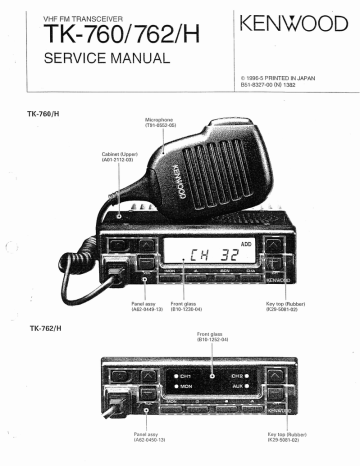

- HOW OT MOD A KENWOOD TK 880 FOR HAM HOW TO
- HOW OT MOD A KENWOOD TK 880 FOR HAM PDF
- HOW OT MOD A KENWOOD TK 880 FOR HAM MANUAL
I just need to know how long you need the wires to be.Note that page can take a while to load, if there are many modifications.

If you want, I will make a couple of pigtail sets for you and ship them when I make my next order. (All manufactured by JST Connectors, which ironically does the bulk of Icom’s stuff too)ĭigikey stocks all of these (even though you just need the ones for CN1 and CN4). I found an old Repeater Builder mail list that describes them as follows: What I DID find was that apparently, Kenwood sells an option cable for these for about $15 bucks called the KCT-19 and it brings all of the signals for that connector group out of the radio. E40-5737-05 is the corresponding part number for CN1. That does not look to be the case with Kenwood, though.
HOW OT MOD A KENWOOD TK 880 FOR HAM MANUAL
*Sometimes* you can take the part number in the service manual and glean the original supply vendor part number from it (Icom is very good about that). I found a supplemental that gave me what I need.
HOW OT MOD A KENWOOD TK 880 FOR HAM PDF
Yeah, I saw the link to it but had hoped that there would be a searchable pdf as that was a really bad scan. The radio appears to perform quite well with minimal additional tweaking. This took quite a bit of drive compared to the amateur radio I had been using with the same TNC for testing, but the Kantronics KPC-9612+ has plenty of oomph to accomplish the task. With everything buttoned up, I adjusted the TNC for the appropriate amount of drive to get about 3kHz of deviation. I soldered to the top of each pin here to gain access. To the left of CN2 (above, in the picture) is the external alarm socket, which contains labeled pins for E (ground) and SB (switched battery). The nice thing about the older TK-805 is that all the components are larger and easier to solder to. It takes a steady hand and a good eye, as these pins are tiny. Since the pins aren’t exposed on the bottom side of the board, I carefully soldered to the top of each as they leave the board and enter the socket. DEO is pin 1, DI is pin 4, and PTT is pin 7. The pins on the large connector are numbered from right to left, with the right-most pin being #1 and the left-most being #8. On the main TX/RX board of the radio, on the left side (if facing the front panel), there is a small group of three connectors, two small and one large eight pin socket labeled CN2. If you want to power your TNC from the radio, you also need SB (switched battery). In the manual, these signals are listed as DI (external modulator input), DEO (detector output), E (earth) and PTT respectively. In order to make high-speed packet work, you need access to the modulator for TX audio, the detector output for RX audio, ground, and of course PTT to transmit. The service manual can be found on repeater-builder, which shows the various boards and the signals on each of the inter-board connectors. However, you can follow those instructions to remove the speaker jack, jumper the proper traces to enable the internal speaker, and route a cable through the resulting hole in the case for interfacing. This one is pretty common, but it actually only describes high-level audio connections, which aren’t suitable for high-speed stuff. This rig is similar to (but much newer than) the oft-used Kenwood TK-805, for which there are documents available about general interfacing. While you could use the well-documented mic and speaker jacks for 1200 baud, 9600 baud and faster require low-level access to the radio’s internals.
HOW OT MOD A KENWOOD TK 880 FOR HAM HOW TO
However, not much is available “out there” on how to interface it to a high-speed TNC.

While not frequency-agile or field-programmable, it is more than adequate for a fixed installation, such as a remote base or digital mode transceiver. It is happy in the ham bands, has a good screen, excellent rubber-covered buttons, and is quite small and rugged. The Kenwood TK-840 is a nice commercial UHF radio that is starting to go for $50-$100 on eBay due to the fact that it is not narrow-band capable.


 0 kommentar(er)
0 kommentar(er)
